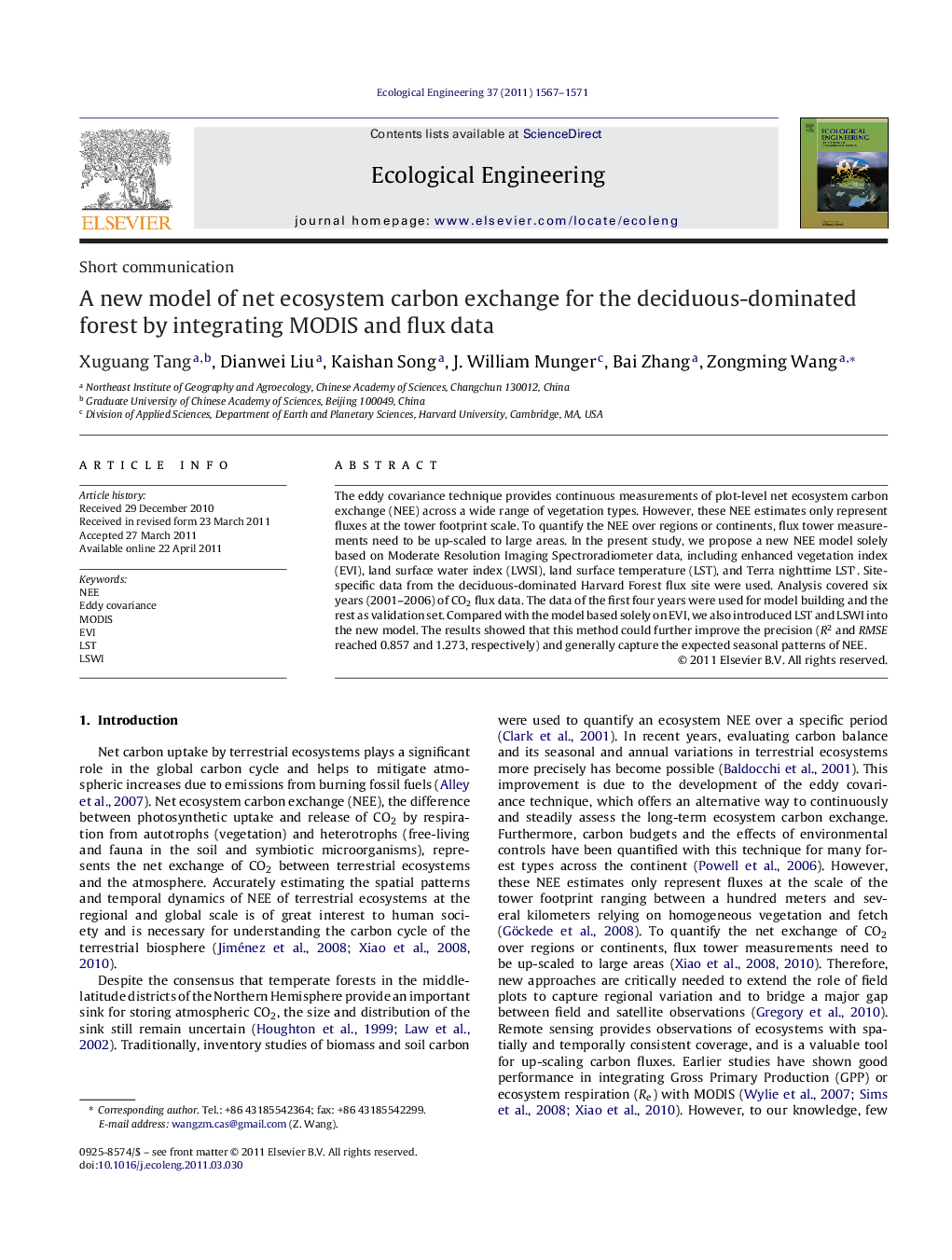| Article ID | Journal | Published Year | Pages | File Type |
|---|---|---|---|---|
| 4390279 | Ecological Engineering | 2011 | 5 Pages |
The eddy covariance technique provides continuous measurements of plot-level net ecosystem carbon exchange (NEE) across a wide range of vegetation types. However, these NEE estimates only represent fluxes at the tower footprint scale. To quantify the NEE over regions or continents, flux tower measurements need to be up-scaled to large areas. In the present study, we propose a new NEE model solely based on Moderate Resolution Imaging Spectroradiometer data, including enhanced vegetation index (EVI), land surface water index (LWSI), land surface temperature (LST), and Terra nighttime LST′. Site-specific data from the deciduous-dominated Harvard Forest flux site were used. Analysis covered six years (2001–2006) of CO2 flux data. The data of the first four years were used for model building and the rest as validation set. Compared with the model based solely on EVI, we also introduced LST and LSWI into the new model. The results showed that this method could further improve the precision (R2 and RMSE reached 0.857 and 1.273, respectively) and generally capture the expected seasonal patterns of NEE.
